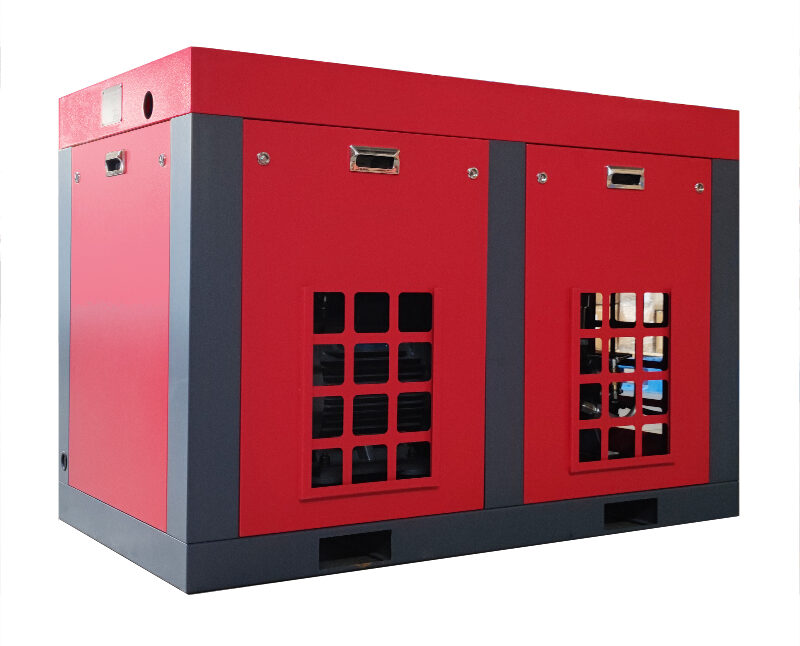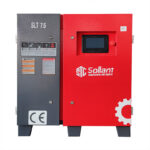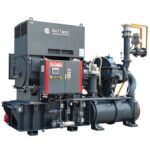Screw air compressors are essential for various industrial applications. However, operating these compressors at low-load or unloaded conditions for extended periods can lead to a range of hazards. These risks not only affect the compressor’s performance but can also result in costly damage and downtime. Below, we analyze these hazards in detail.
1. Decreased Equipment Performance
A. Reduced Compression Efficiency
When a screw air compressor operates at low load or remains unloaded for long periods, its compression efficiency significantly declines. Under low-pressure conditions, the compressor takes longer to complete the compression cycle, which reduces overall efficiency. This inefficiency not only reduces the production capacity but also increases energy consumption, leading to higher operational costs.
B. Increased Wear of Mechanical Parts
Long-term low-load operation can lead to increased wear of internal moving parts, such as screws and bearings. This happens because there is insufficient lubrication and cooling during unloaded operations. Over time, this wear shortens the service life of the compressor and can even result in severe failures like screw jamming or bearing damage.
C. Poor Oil Lubrication
When running unloaded, the compressor’s internal operating speed decreases, leading to poor oil lubrication. This insufficient lubrication increases friction between moving parts, accelerating wear and potentially leading to a complete failure of critical components.
D. Oil Deterioration and Emulsification
Screw air compressors rely on lubricating oil to reduce friction and cool the system. However, long-term low-load operation accelerates the deterioration of this oil, especially under no-load conditions where water condensation from compressed air can cause the oil to emulsify. This emulsified oil contaminates the system, negatively impacting compressor performance and significantly reducing the equipment’s lifespan.
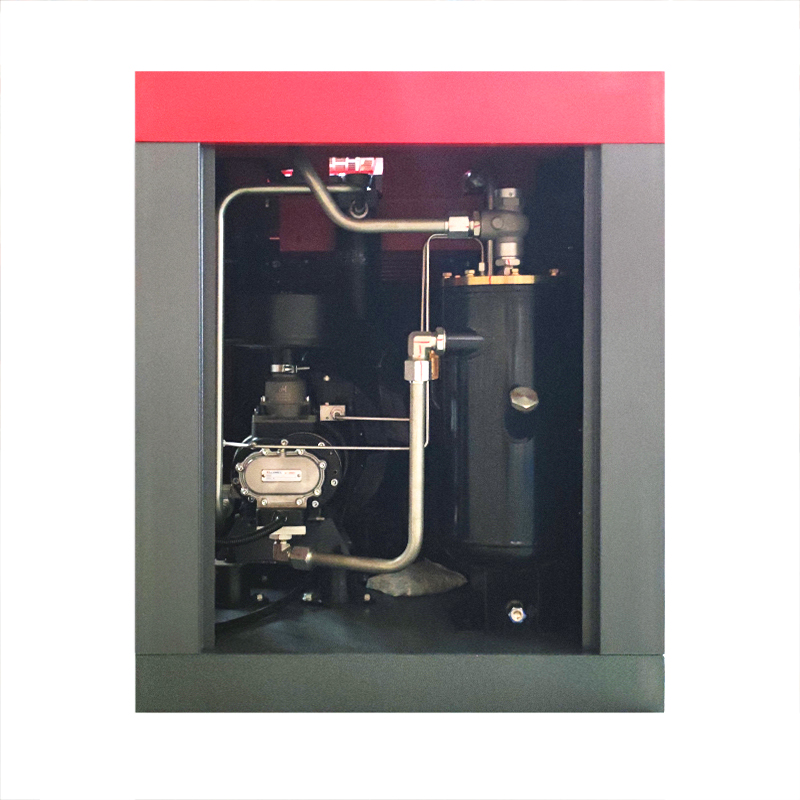
2. Increased Energy Consumption
A. Higher Energy Consumption
With reduced compression efficiency during low-load operation, the screw air compressor must consume more energy to complete the same workload. This inefficiency not only increases energy consumption but also raises operating costs for the business.
B. Decreased Energy Efficiency
Over time, operating at low loads reduces the energy efficiency of the screw air compressor. Even though the equipment may appear to be functioning normally, internal wear and poor lubrication lower its actual energy efficiency, leading to wasted resources.
3. Decreased System Stability
A. Increased Pressure Fluctuations
Frequent unloading or long-term low-load operation can result in pressure instability within the system. This can lead to pressure fluctuations that disrupt the production process and may even cause damage to the equipment.
B. Increased Safety Hazards
The reduced stability of the system also presents safety risks. Overheating or electrical failures can occur due to inconsistent pressure levels, threatening both equipment integrity and worker safety.
4. Increased Risk of Equipment Failure
A. Lubricant Deterioration and Failure
Operating under low load or unloaded conditions can cause the lubricant temperature to drop below 70-75°C. This condition increases the likelihood of water condensation in the compressed air, which then leads to lubricant emulsification and deterioration. Such degradation results in damage to vital rotating components, such as bearings and rotors. Rust from these damaged parts can block oil filters and separators, further complicating the system.
B. Failure of Other Components
In addition to lubrication issues, other components like solenoid valves and oil separators can suffer damage due to prolonged low-load or unloaded operation. These failures disrupt normal operations and increase maintenance costs.
5. Increased Maintenance Costs
A. Increased Maintenance Frequency
Long-term low-load operation reduces the overall performance and stability of the compressor, leading to an increased need for frequent repairs and maintenance. This not only escalates maintenance costs but also reduces equipment reliability and stability.
B. Frequent Replacement of Spare Parts
The extended operation at low load accelerates wear on the compressor’s components, which leads to the frequent replacement of spare parts. The continuous need for replacements results in higher spare parts costs and may lead to extended downtime, negatively affecting production efficiency.
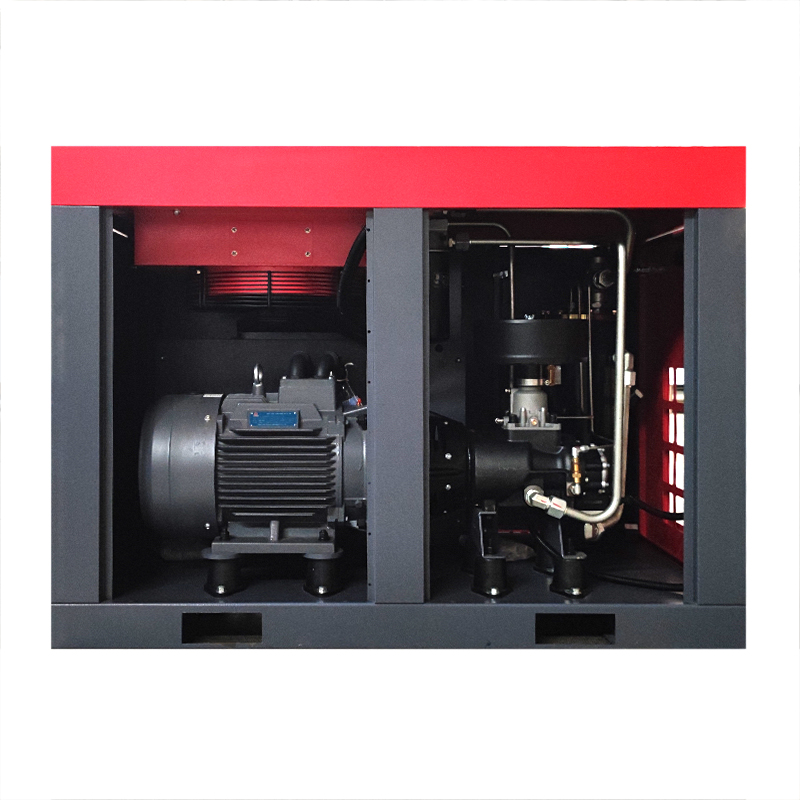
6. Solutions and Suggestions
A. Adjust Operating Parameters
To avoid the risks associated with low-load operation, it’s important to adjust the operating parameters of the screw air compressor. Setting the correct outlet pressure within the recommended range can ensure the compressor operates optimally, preventing damage from prolonged low-load conditions.
B. Implement Energy-Saving Technologies
Introducing advanced energy-saving technologies, such as variable frequency drives (VFDs), can significantly reduce energy consumption during low-load operations. VFDs adjust the compressor’s speed based on real-time demand, improving energy efficiency and lowering operating costs.
C. Regular Equipment Inspection and Maintenance
Conducting regular inspections and maintenance is essential to keeping the screw air compressor in top condition. This includes checking the oil level, filter elements, and ensuring all components are properly tightened. Timely detection and resolution of issues can extend the equipment’s lifespan and maintain its efficiency.
D. Operator Training
Proper training for operators is crucial. Well-trained operators can identify potential problems early, minimizing downtime and optimizing the compressor’s performance. Enhanced knowledge also ensures that the equipment operates efficiently, reducing the risk of damage or failure.
Conclusion
Long-term low-load or unloaded operation of screw air compressors poses significant risks, including decreased equipment performance, increased energy consumption, reduced system stability, higher failure rates, and increased maintenance costs. To mitigate these hazards, businesses must take proactive steps, such as adjusting operating parameters, implementing energy-saving technologies, and regularly maintaining the equipment. By addressing these issues, enterprises can ensure the reliable operation of their compressors, reduce operating costs, and extend the equipment’s lifespan.
Analysis of the reasons for oil shortage in screw air compressor

